A Love Story of Deities Told at Philae Sound and Light Show
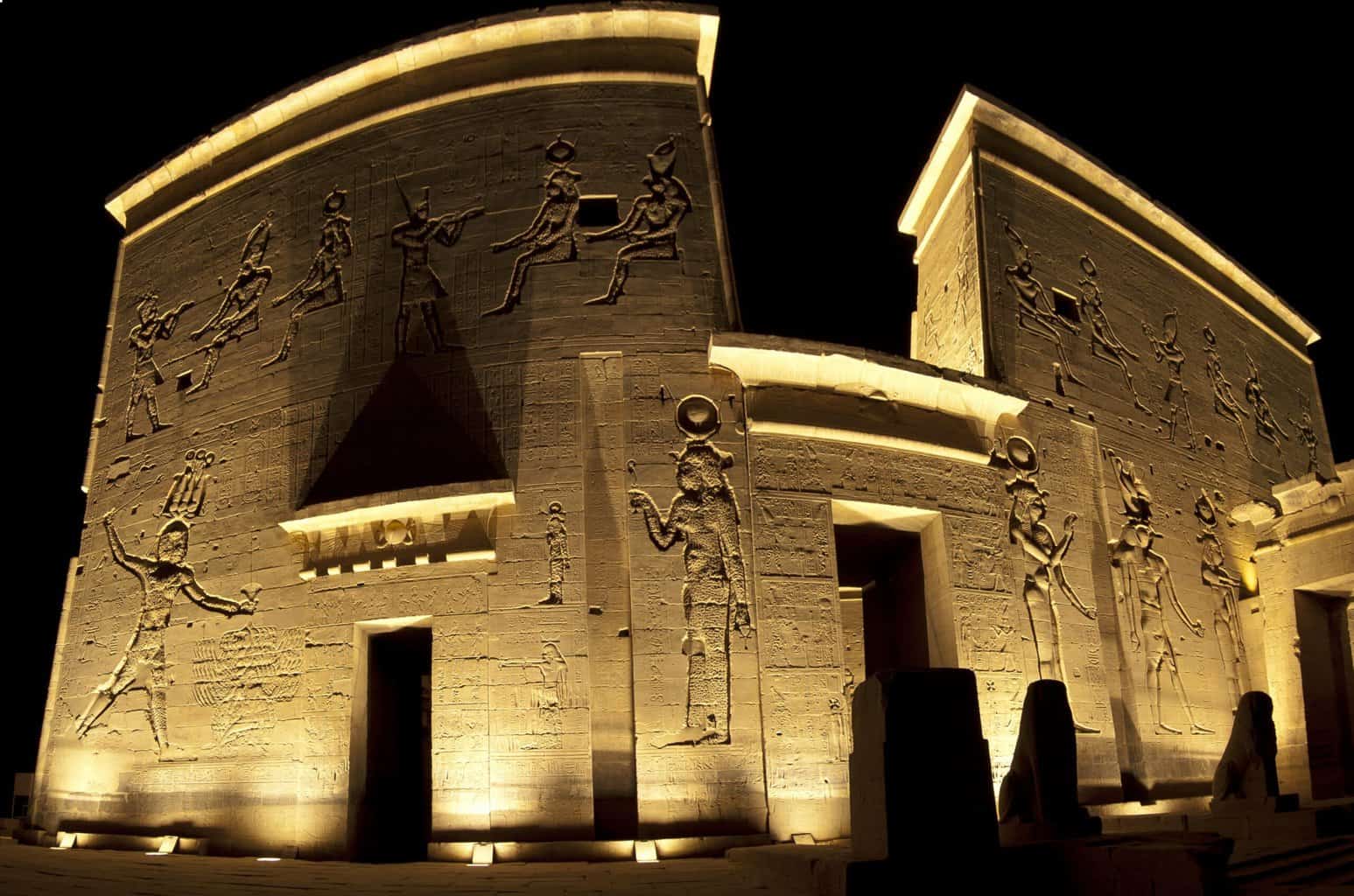
Updated On: April 18, 2024 by Marwa Abdel Moniem
The life of the ancient Egyptians has always had its charm, not just because of the great monuments, but the rituals of the ancestors had many eyebrows raised in astonishment as well.
Those rituals are not only concerned with the Pharaohs’ life, though. Some of them are about the gods and goddesses, the afterlife, and the resurrection. Yes, the afterlife is part of the ancient Egyptian story, one that is told at night!
The myth of Isis and Osiris is a masterpiece about resurrection in ancient Egypt. Nowadays, this myth is being revived through the Sound and Light Show at the Philae Temple in the Upper Egyptian city of Aswan. It is a night show that brings the past back to life.
The Sound and Light Show at Philae Temple
As the sun sets over the Philae Temple in Aswan, visitors of the complex wait in excitement to watch the magical Sound and Light Show and listen to the kings as they tell their own stories.
The sounds and lights intertwine in a panoramic narrative that is being played against the background of floodlit buildings and the rocks of the temple, with water surrounding the place and creating such a magical environment for the audience. The show will simply steal your heart as the ancient secrets and mysteries are being told.
The Myth and the Show
The show begins with music set in, and the audience can hear two voices telling them the story of the mythological couple, Isis and Osiris. It is a tape running in the background with the lit temple walls containing scenes of Isis bringing Osiris back to life.
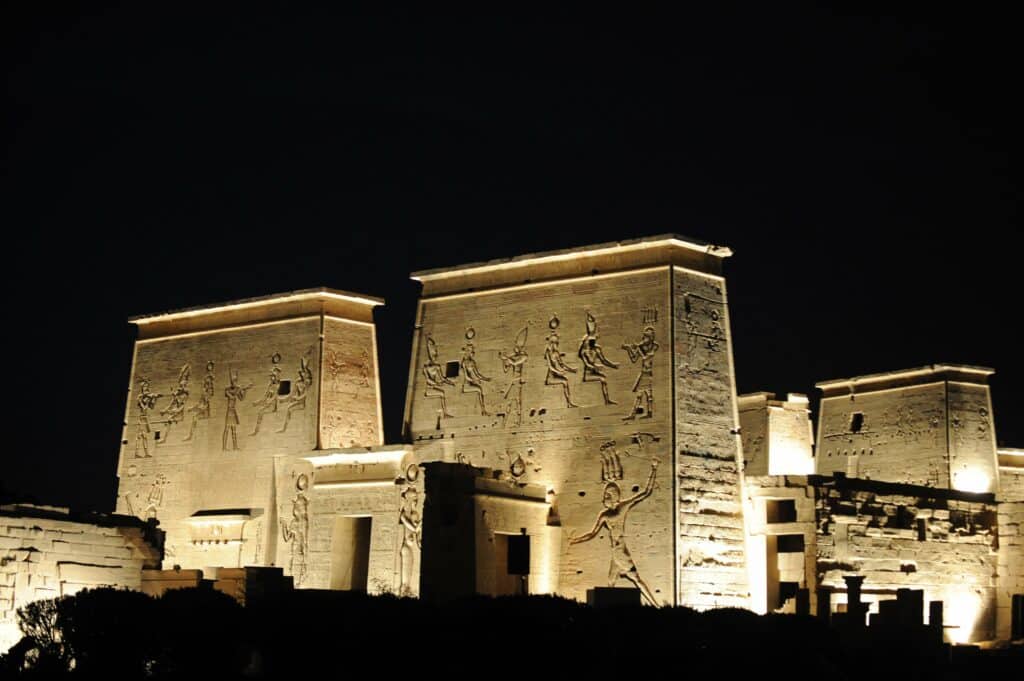
The Murder of Osiris
The wildly held myth suggests that Osiris was killed at the hands of the evil Seth. Seth, the god of disorder, had a wooden coffin cut to the size of Osiris in a bid to get rid of him and become the king. A party was then held, and the attendees were intrigued into testing measurements of their bodies inside the chest.
Osiris was encouraged to rest inside the coffin during the banquet, and once he did, the lid was locked, and then the coffin was sealed and thrown into the Nile. The murder reportedly took place during the month of July when the waters of the river were rising. The coffin of Osiris drifted down to the sea and rested in a place where it was entirely enclosed by the trunk of a tamarisk tree in Byblos, Phoenicia.
Upon learning of the murder, Isis set off to find the coffin of Osiris and was able to bring it back to Egypt. But Seth was first to retrieve the coffin, took out Osiris’s corpse, tore it into 14 parts, and then scattered them throughout the land.
The Mummification and Resurrection of Osiris
Isis set out to search for the pieces and was able to find only 13 of all 14. She then put his body back together and wrapped it up in fine linen bandages, and so Osiris became the first mummified person.
Isis then used her immense magic and performed the rites of embalming to bring Osiris to eternal life. Osiris was resurrected and became the Lord of the Dead and the Afterlife in the land of the deceased.
The Birth of Horus
The scenes on the walls of the temple also depict the birth of Horus, as the narrators during the Sound and Light Show tell the audience. Isis had Osiris alive for long enough to conceive their son Horus, and then she fled to the marshes of the Nile River delta and gave birth to Horus.
She wanted to protect her son because she knew her brother Seth would want to kill him as well. Born as a divine son, Horus was worshipped in the Old Kingdom of Egypt as “Horus of Nekhen”. He is one of the deities whose precise origin (Nekhen) is known.
How the Lights and Music are Orchestrated in the Show
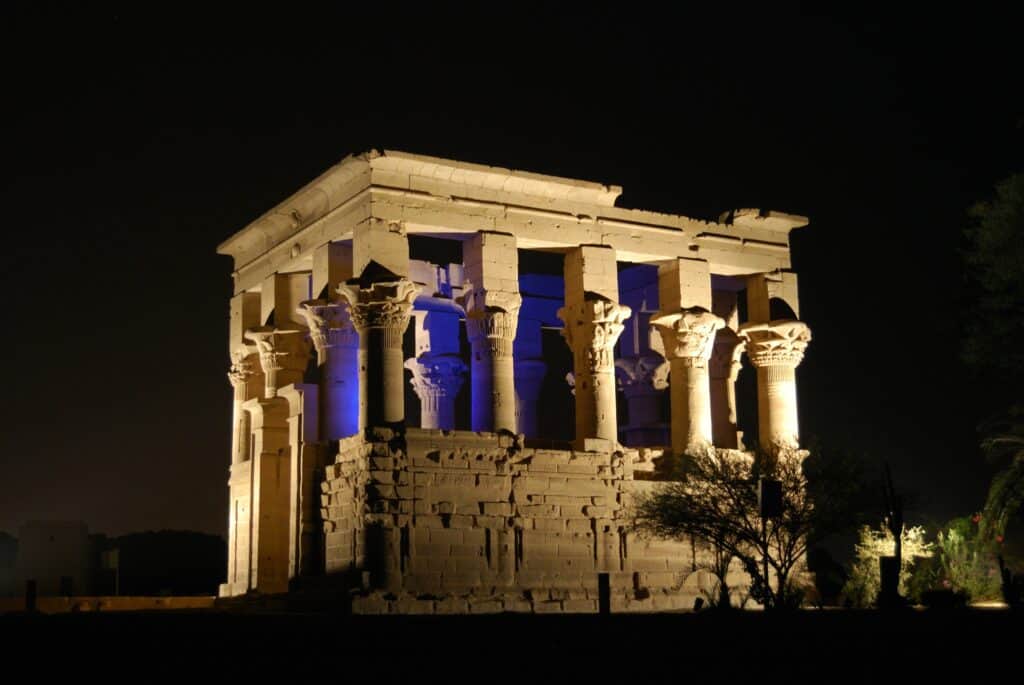
Sitting back on the patio of the Philae Temple, the audience could enjoy the spectacular lights that fall on the walls containing scenes from Egyptian mythology. Spotlights beam in white, yellow, and blue, making reliefs remarkably illuminated, much to the enjoyment of the attendees.
The multimedia presentations are accompanied by music during that show, including the narration of the history of the dramatically lit temple. It is a symphony of illumination that adds to the excitement of the narrated story and history of Philae.
The History of the Philae Temple
Seeking to please the ancient Egyptians, the Ptolemies had temples built for their most beloved gods and goddesses, including Isis, Osiris, and Horus.
The Philae Temple was built in the Greco-Roman period during the reign of Ptolemy II (285-246 BC). This complex was dedicated to the goddess Isis, who symbolised healing, birth, and magic, which are the main themes of Egypt’s ancient religious myth.
Ptolemy II also ordered the construction of a temple for Isis’s consort, Osiris, on the neighbouring island of Bigeh. Their son Horus had his temple constructed on Philae Island.
Decorations on the temple of Isis started during the late Ptolemaic era, which is the last dynasty of ancient Egypt and continued through the Roman reigns of emperors Augustus and Tiberius, but they were never completed. A gate that stands west of the complex was constructed during the time of the Roman emperor Hadrian.
The temple of Isis remained active until the reign of the Byzantine Emperor Justinian I, who ordered its foreclosure together with all pagan complexes. The temple of Isis was the last stronghold of the pagan faith in ancient Egypt before it was converted into a Christian church, and many inscriptions were deliberately destroyed.
Originally, the complex had some obelisks in the front, but those were removed in 1918 by British Consul Henry Salt. They are now decorating a garden in Dorset, England.
The Island of Philae
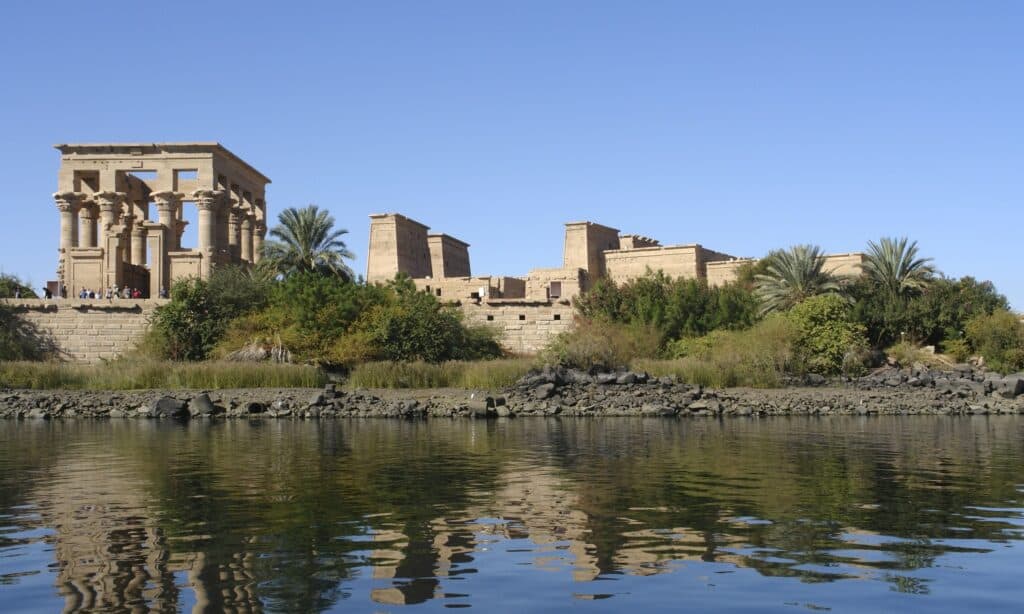
“Philae” is the Greek translation for “Pilak” in the ancient Egyptian language, and it means “the remote place”. The ancient Egyptians used the word to refer to the southernmost edge of Egypt. Measuring 450 metres long and less than 150 metres wide, the tiny island of Philae is located south of Aswan, thus belonging to Nubia nowadays.
The Philae Temple & UNESCO
The temple on Philae Island in the southernmost part of Egypt’s Aswan was almost submerged with rising levels of Nile water due to the construction of the new High Dam in 1960. The building of the High Dam flooded the area, putting the temple and other monuments there at risk. It was then when UNESCO, the saviour of many historic sites, moved to save the Philae complex.
The International Campaign to Save Nubia Monuments worked with the Egyptian government to relocate the entire Philae Temple to nearby Agilkia – a higher island in the reservoir of the Old Aswan Dam. The temple was moved near the expansive First Cataract – those are shallow lengths of the Nile River located between Aswan and Khartoum.
UNESCO teams did a painstaking job of taking apart and moving all 50,000 bricks (one by one) of the temple 500 metres away from Philae Island and rebuilding it in the new location, where it stands till now. This was UNESCO’s greatest archaeological rescue campaign of all time.
Standing majestically on Agilkia Island, the Philae Temple is considered a gem in the crown of the Nile River in the south of Egypt. It is one of the most beautiful and best-preserved ancient sanctuaries.
How to Reach the Philae Temple
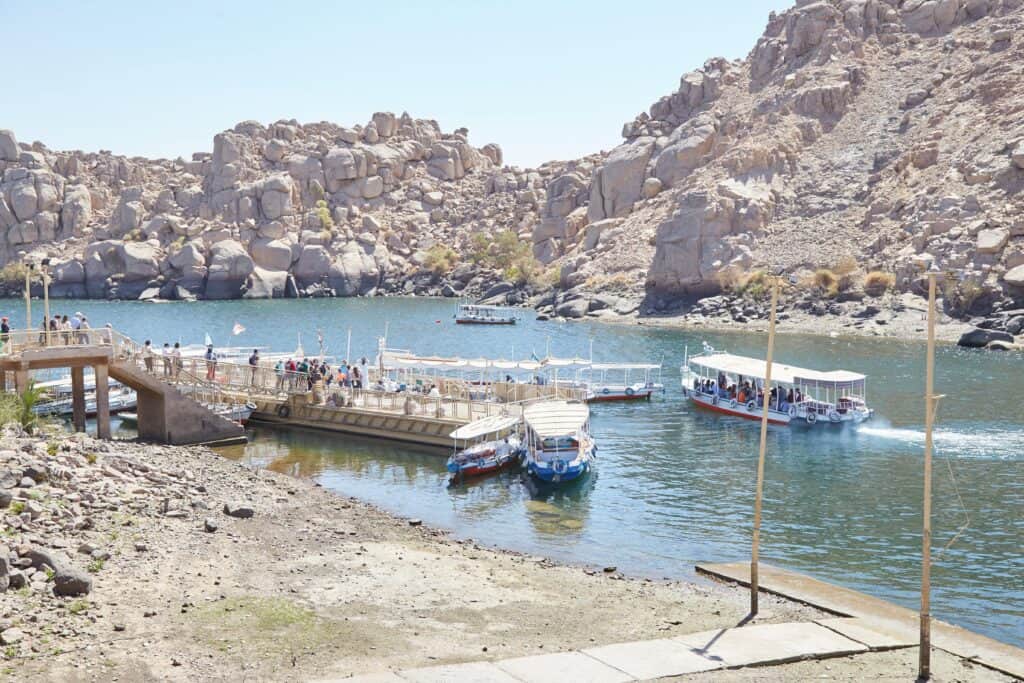
Reaching the sanctuary of Isis on Agilkia Island is easy. Just take a taxi to the Marina Philae Temple from the Upper Egyptian city of Aswan. There you will find boats waiting to ferry visitors to Agilkia Island, where the Sound and Light Show takes place.
You can also take a horse-drawn carriage from Aswan to the dock of the boats, which sail to the temple of Isis every day and night. If you are already on a Nile trip, you need not worry because most of those cruises make stops in this area, so your visit to the Philae Temple won’t be missed.
Save Yourself a Seat at the Sound and Light Show
Tickets to the night show at the Philae Temple could be easily purchased online through the website of Sound and Light Show. Visitors also have the option to choose from 10 language audios in which the myth of Isis and Osiris is narrated.
Standard tickets are sold for 21.11 dollars per non-Egyptian adult attendee of the Sound and Light Show at the island temple. Foreign Children from six to twelve years old are allowed in with regular tickets worth 8.93 dollars each.
The Sound and Light Show is played all days of the week from 8:00 p.m. to 9:00 p.m. Tickets are available here. So, you are only one click away. Book your tickets now!






